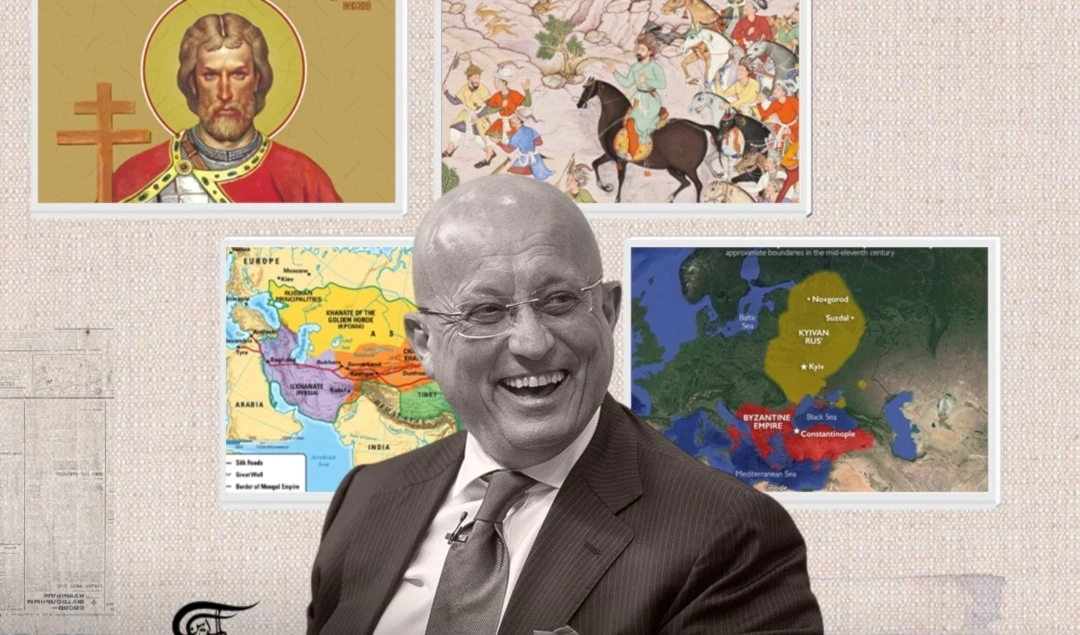Nader 'the traitor' and the sealing of Afghanistan's ugly fate – PART III
A small group of students, who met regularly in a pub in Kabul where they held heated discussions, were determined to take up an armed struggle against the formidable clan.
-

There were, however, Indian independence fighters who also settled in Afghanistan. These people were persecuted, arrested, deported, left to die in prison or were summarily executed
Mohammad Nader Khan's thirst for revenge and the beginnings of a resistance...
After Nader had seized power, the already thin stratum of educated, progressive and respected citizens of Afghanistan became even thinner. The once influential people who had organised oppositional groups had either been murdered, imprisoned, forced into hiding or into exile abroad. At home, they were pursued by a dense network of informers and spies, and abroad they were under surveillance by "Her Majesty's" secret services in London, which provided important information to the despot in Kabul.
Dodgy characters from British India, who were directly or indirectly connected to authorities of the colonial power in India (the same ones who delivered Nader from India), held high and important offices or exercised considerable influence as advisers. These men, who were poor or moderately affluent Muslims dedicated to serving the "British Crown", ended up acquiring great wealth in Afghanistan under Nader and his family.
There were, however, Indian independence fighters who also settled in Afghanistan. These people were persecuted, arrested, deported, left to die in prison or were summarily executed. In this particular instance the Pashtun clan conveniently disregarded the "Pashtunwali", the code of the Pashtuns, according to which asylum seekers must be given security and protection. But, later, when the Allies demanded the extradition of several Nazis who had absconded to Afghanistan after World War II, the Afghan state refused to extradite the Nazis, invoking the Pashtunwali.
READ: Nader 'the Traitor', the sealing of Afghanistan's ugly fate – PART I
The few opposition members who remained behind, mostly young students, were deeply traumatised and in despair. All their dreams and plans for a better life for themselves and for the country, which were all associated with Amanollah's reforms, had been brutally shattered - initially by reactionary uprisings and the ensuing civil war and then by Nader and his clan. Future generations in Afghanistan would share such a fate repeatedly... as recent events in 2020 clearly show.
The ousted legitimate king Amanollah, still exiled in Rome, remained indecisive and without any plan. Although the entire educated class and considerable sections of the non-Pashtun population, such as the Hazaras, were willing to fight for him and to help him return to power, he preferred to rely on foreign powers, who had shifted their stance on Afghanistan on the eve of the Second World War and during the rise of fascism in the West. For them, Amanollah was a burnt card that was no longer worth anything.
Thus some of the disillusioned young dreamers decided to go it alone. A small group of students, who met regularly in a pub in Kabul where they held heated discussions, were determined to take up an armed struggle against the formidable clan.
On a Tuesday, 6th June 1933, Sayed Kamal, a student who had just completed his studies in Germany, went to the Afghan Embassy in Berlin and shot Ambassador Mohammad Aziz, a brother of Nader Khan.
The German government intended to extradite Sayed Kamal to Afghanistan, but Nader insisted they put him on trial in Germany and have him executed... otherwise, the Afghan side would break off relations with Germany and expel all the Germans currently residing in Afghanistan. At his trial, Sayed Kamal explained that the motivation behind his act was his fierce opposition to British colonialism and that his aim was "to strike the horse to thwart the rider". He was sentenced to death by guillotine in Berlin. In Kabul, Nader went on to hang Sayed Kamal's older brother, who had nothing to do with the deed and only ran a small grocery.
READ: Nader 'the Traitor', the sealing of Afghanistan's ugly fate – PART II
On 6th September 1933, Mohammad Azim Monshizada, a schoolteacher, attempted to break into the British Embassy in Kabul to assassinate the British ambassador. When he was unable to enter the embassy building, he shot an American employee with whom he had had an exchange at the entrance. An Indian employee and an Afghan gardener were also fatally shot in the process. Mohammad Azim Monshizada was sentenced to death and executed on 13th September 1933. The British ambassador was personally present at his execution. Nader took this opportunity to execute other notable prisoners who had nothing to do with the crime and had been in prison for some time.
"Our heroes Sayed Kamal and Mohammad Azim have struck the snake in its tail, but now it's time to slay the snake for once and for all," Abdollkhaleq, a 17-year-old student and alleged member of a secret resistance group was to declare to his friends. Thus he procured a pistol and waited for the right opportunity... On 8th November 1933, a ceremony was to be held at the Arg (the royal palace in the centre of Kabul) where Nader was to hold a speech and then distribute diplomas to the students and pupils. A football match between the teams of two schools was to follow.
Following his speech, Nader proceeded to hand out diplomas to the long row of students. When it came to Abdollkhaleq's turn, the boy pulled out the pistol he had managed to smuggle through security and brought Nader down with three bullets.
-

What is believed to be the first photo ever of a fresh attack shows Nader, shortly after the assassination attempt
A Kabul resident was to recall that fateful day: "We were sitting at home, not knowing what had happened, when my father suddenly rushed in through the door excitedly and told us to prepare for a feast, to get cakes and fruit, because today was a big day. We asked him what the occasion was, as it was no one's birthday and there was no other reason to celebrate. He said, 'Oh, but there is! The English dog has just been sent to hell.' And we all knew whom he meant."
Abdollkhaleq, his entire family, his neighbours, his friends and some of his teachers and classmates were arrested and taken to prison. And several other people who had nothing to do with the crime but who were known to be opponents of the Mohammadzayi family were also detained.
On 18th December 1933, the regime mustered people loyal to the family and other senior figures in a final "performance" to seek their approval for the verdicts of a show trial held earlier. Nader's brothers, Mohammad Hashem (the Prime Minister) and Shahmud (the Minister of War), presided over the congregation. The decisions as to who would be executed and who would be sentenced to life imprisonment was made shortly before lunch.
All those arrested were tortured, and false confessions were extracted from some of them. Although Abdollkhaleq was the most severely tortured, he insisted that he had planned and carried out the crime all by himself.
-

Abdollkhaleq (far right) and his friends in chains
In the afternoon, Abdollkhaleq and 15 others were executed in the square in front of Central Prison in Kabul. Among them were Abdollkhaleq's father, his two uncles, two classmates and close friends along with their fathers, the school's vice-principal, three members of the Charkhi family (a family loyal to Amanollah) and six young men who had written and distributed leaflets.
Before the public execution was held, Abdollkhaleq was once again assaulted and tortured – and so excessively that he died in the process. His bloody, lifeless corpse was then hanged in accordance with the verdict.
Abdollkhaleq's mother, aunt and three-year-old sister died later under unexplained circumstances in the women's prison. Their bodies were buried in an unknown place. Ultimately, Abdollkhaleq's entire family was exterminated.
And... as Abdollkhaleq was a Hazara, the Hazara population once again fell out of favour with the Pashtun rulers.
For the Hazaras and most of the non-Pashtun population of Afghanistan, Abdollkhaleq is considered a hero and martyr.
-

Abdollkhaleq, hero and martyr
Many years later, on 7th April 1997, in the wake of a successful and bloody coup conducted by the People's Democratic Party of Afghanistan, during which Mohammad Daud (the last ruler of the Mohammadzayi clan) had been killed fighting with his family, Radio Kabul proclaimed that: "the last remnant of the reviled dynasty of "Nader the Traitor", has finally been extinguished". This announcement was celebrated in many households in Afghanistan, especially those of non-Pashtuns.
At one time, Nader admitted that Amir Abdollrahman was his role model and that nothing could or should be undertaken in Afghanistan without the approval of "Britain". In his brief reign, Nader sought to emulate his Afghan mentor and serve his British masters.
Nader "the Traitor" and Abdollrahman Khan "The Bloodsucker" were the most brutal despots in the brief history of Afghanistan and inflicted deep and permanent wounds on an already battered Khorasan society – Pashtuns included... And these wounds remain open and fresh to this day.
* * *
Some publications on these topics:
Aryanfar, Aziz – various publications and Persian translations of other history books (such as Cabool: Being a Personal Narrative of a Journey to, and Residence in That City, in the Years 1836, 7, and 8 (also known as Mission in Kabul)
- Barth, Fredrik – Pathan Identity and its Maintenance
- Burnes, Alexander – Cabool: Being a Personal Narrative of a Journey to, and Residence in That City, in the Years 1836, 7, and 8 (1842)
- Caroe, Olaf – The Pathans: 550 BC - AD 1957
- Dorronsoro, Gilles – Revolution Unending: Afghanistan, 1979 to the Present
- Elphinstone, Mountstuart – Account of the Kingdom of Caubul and its Dependencies in Persia, Tartary and India
- Farhang, Mir Mohammad Sediq – Afghanistan in the Last Five Centuries
- Ghobar, Mir Gholam Mohammad – Afghanistan in the Course of History
- Glatzer, Bernt – The Pashtun Tribal System
- Gregory, Derek – The Colonial Present: Afghanistan, Palestine, Iraq
- Habibi, Abdul Hai – History of Afghanistan After Islam
- Johnson, Thomas H. & Mason, M. Chris – Understanding the Taliban and Insurgency in Afghanistan
- Kohzad, Ahmad Ali – Abdur Rahman Khan and the Durand Line
- Malik, Aqab Mehmood – The Weaponisation of Afghanistan and the Effects of Small Arms and Light Weapons Proliferation on Conflict Dynamics
- Mamoon, Razaq – The Nights of Rome
- Plik, Alexander Alexeevich – The Economic Structure of Afghanistan (Russia)
- Reisner, Igor Mikhailovich – Feudalism and the Building of the Afghan State (1954)
- Singh, Ganda – Ahmad Shah Durrani, Father of Modern Afghanistan (1959)
- Sykes, Percy – A History of Afghanistan (1940)
- Vogelsang, Willem – The Afghans (2001)
- Witzel, Michael – The Home of the Aryans
- Yate, Charles Edward – Khurasan and Sistan / Northern Afghanistan

 Tariq Marzbaan
Tariq Marzbaan
 10 Min Read
10 Min Read












